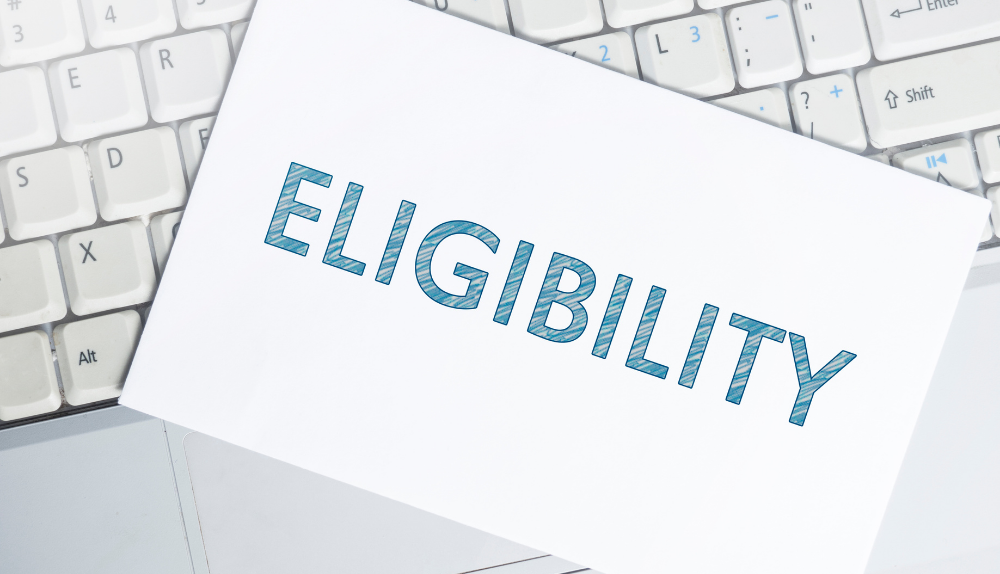If you want to get the Employee Retention Credit (ERC) in 2023, you need to act fast because the deadlines are coming up quickly. Don’t worry; we’re here to guide you through the process step by step. Whether you’re a business owner or an employee, we have all the information you need to know about ERC.
We’ll explain the deadlines for ERC, which are the important dates you must keep in mind. Also, we’ll tell you if you qualify for the credit or not. If you’re eligible, we’ll show you how to figure out the amount of money you can get and how to apply for it.
Sometimes, people make mistakes while claiming the ERC, so we’ll tell you what to avoid. We’ll also give you helpful tips on how to keep track of your credit and keep proper records.
It’s essential to act quickly because the 2023 deadline is approaching, and you don’t want to miss out on this opportunity to get the ERC. So, let’s get started and make sure you get what you deserve!
Understanding the Deadlines for ERC in 2023
If you thought the opportunity to claim the Employee Retention Credit (ERC) had passed with its expiration in September 2021, think again! Qualified businesses, companies, and employers can still get a chance to receive the ERC in 2023. To do so, it’s essential to comprehend the deadlines and the process involved. In this section, we’ll break down the necessary steps to ensure you don’t miss out on this valuable tax credit.

Retroactive Claims through IRS Form 941-X
Although the ERC may have ended in 2021, companies can still apply for it in the past. The IRS Form 941-X, which enables business owners to make adjustments to their initially filed Form 941s, is the key to obtaining the credit. Using this rectification form will let you submit an ERC claim for the 2020 and 2021 qualifying quarters.
The Time Limit for Filing 941-X
When claiming the ERC for previous years, time is of the essence. It’s important to keep in mind that there is a deadline set by the IRS for submitting Form 941-X. The 941-X form for ERC claims must be submitted by business owners no later than three years since they first filed the payroll tax returns.
Deadline for ERC in 2020
For businesses seeking to claim ERC for eligible quarters in 2020, the clock is ticking. If filed before that date, Forms 941 for a calendar year are regarded as having been filed on April 15 of the following year, according to the IRS. Therefore, April 15, 2024, is the due date for 941-X submissions for ERC claims linked to 2020 qualifying quarters.
Deadline for ERC in 2021
If you missed out on claiming the ERC for eligible quarters of 2021, don’t lose hope just yet. The opportunity to receive the credit for this year is still open, but you need to act quickly. The 941-X submission date for ERC claims pertaining to 2021 qualifying quarters is April 15, 2025.
Don’t Wait – Act Now
The deadlines might seem far away, but time can fly, and before you know it, the opportunity to claim the ERC for past years will be gone. It’s crucial to start gathering the necessary information and filing the required paperwork as soon as possible. Waiting until the last minute could lead to missing out on this valuable credit.
Even though the ERC expired in September 2021, there’s still a chance for businesses to claim it retroactively in 2023. The key lies in understanding the deadlines and filing the necessary IRS Form 941-X. Remember to act promptly to secure your claim for eligible quarters in 2020 and 2021. The IRS has set specific deadlines for these claims, so make sure to mark your calendar and don’t miss this opportunity to potentially save significant amounts on your taxes.
ERC Eligibility Requirements
The Employee Retention Credit (ERC) is a valuable tax credit designed to support businesses and employers during challenging economic times, particularly amid the COVID-19 pandemic. To benefit from this credit, businesses should meet specific eligibility requirements. Below are the key criteria that businesses must fulfill to qualify for the ERC:

Financial Impact due to COVID-19
A business must show that its gross receipts significantly decreased during the applicable quarters in order to qualify for the ERC. Typically, this denotes a drop in gross receipts of at least 50% from the same quarter the year prior. This provision is necessary because the ERC wants to help firms that have been negatively impacted by the pandemic.
Fully or Partially Suspended Operations
Alternatively, a business can qualify for the ERC if it was partially or fully suspended due to government orders related to COVID-19. This suspension can be in effect at the beginning of the quarter, and the business remains eligible until the quarter when its operations resume.
Employee Count Limitations
The size of the company may have an effect on eligibility. Businesses that qualify for 2020 had fewer than 100 full-time employees on average during 2019. The cap was raised, and as of 2021, qualified enterprises can now only employ 500 full-time workers on average.
Governmental Entities Exclusion
Certain entities, such as state and local governments and instrumentalities, are not qualified for the ERC.
PPP Loan Interaction
The ERC and Paycheck Protection Program (PPP) have some interplay. Businesses that received a PPP loan may still be qualified for the ERC, but the wages used for PPP loan forgiveness cannot be used for calculating the ERC.
Qualified Wages
Based on the qualified salaries given to qualified employees, the ERC is computed. All salaries, regardless of whether employees are working or not, are eligible for the ERC for enterprises with 100 or fewer full-time employees. Only earnings paid to employees who are unable to work during the eligible quarters as a result of COVID-19 consequences are eligible for enterprises with more than 100 full-time employees.
Time Periods for Eligibility
The ERC’s eligible time periods have evolved over time, with different rules applying to 2020, 2021, and 2022. It’s essential to stay up-to-date with the specific periods and requirements for each year.
Calculating the ERC
Calculating the Employee Retention Credit (ERC) involves determining the eligible wages paid to eligible employees during the eligible quarters. The credit amount is based on a percentage of these qualified wages. Here’s a step-by-step guide on calculating the ERC:

Determine Eligibility
Ensure that your business meets the eligibility requirements for the ERC. This includes meeting employee count restrictions, exhibiting a considerable drop in gross earnings, or enduring a partial or complete stoppage of operations as a result of COVID-19.
Identify Eligible Quarters
Determine the eligible quarters for which you want to claim the ERC. Depending on the tax year (2020, 2021, etc.), different quarters may be eligible.
Calculate Qualified Wages
Identify the eligible wages paid to each eligible employee during the eligible quarters. Qualified wages differ depending on the size of your business:
- For businesses with 100 or fewer full-time employees: Whether an eligible employee is working or not, all salaries earned to them during an eligible quarter are eligible for the ERC.
- For businesses with more than 100 full-time employees: Only salaries paid to eligible employees who are not working during eligible quarters due to COVID-19 impacts qualify for the ERC.
Determine the Credit Percentage
A sum called the ERC is determined as a portion of qualified wages. The credit rate is 50% of qualified wages for the qualifying quarters of 2020, with a yearly cap of $10,000 for each employee. The credit rate is 70% of qualifying wages for qualified quarters in 2021 and after, with a cap of $10,000 in qualified pay per employee for each qualified quarter.
Calculate the Credit Amount
Multiply the credit rate (50% for 2020 or 70% for 2021 and beyond) by the total qualified wages paid to each eligible employee during the eligible quarters. Then, cap the credit at $10,000 per employee per eligible quarter.
Claiming the Credit
Report the ERC on your employment tax returns, such as Form 941, for the applicable quarters. If you are eligible for a credit amount that exceeds your payroll tax liabilities, you may be able to request a refund or use the excess credit against future payroll tax deposits.
Documentation
Keep thorough records and documentation of your calculations, eligible quarters, qualified wages, and supporting documents to substantiate your ERC claim in case of IRS scrutiny.
Final Words
In conclusion, the Employee Retention Credit (ERC) offers a valuable opportunity for businesses to receive financial assistance during challenging economic times, particularly in the aftermath of the COVID-19 pandemic. Despite the credit’s expiration in 2021, businesses can still retroactively claim the ERC for eligible quarters through IRS Form 941-X until specific deadlines.
Understanding the eligibility requirements, qualified wages, and the credit calculation process is crucial for businesses aiming to maximize their benefits from the ERC. As businesses gear up to claim the ERC, it is essential to act promptly, keeping track of deadlines and ensuring accurate calculations while seeking professional advice when needed.
The ERC can serve as a lifeline for businesses, aiding in employee retention and supporting economic recovery. With the right knowledge and preparation, businesses can navigate the complexities of ERC and make the most of this valuable tax credit.
Frequently Asked Questions (FAQs)
Is the ERC still available in 2023?
Yes, the ERC is still available in 2023 for eligible businesses that meet the criteria. Even though the credit expired in 2021, businesses can retroactively claim it through 941-X form for eligible quarters.
What are the deadlines for claiming the ERC in 2023?
For eligible quarters in 2020, the deadline to submit Form 941-X for ERC claims is April 15, 2024. For qualified quarters in 2021, the deadline is April 15, 2025.
Can the ERC be claimed for employees who are working remotely?
Yes, eligible wages for the ERC include those paid to employees working remotely as long as they meet the other eligibility criteria.
How can businesses claim the ERC for previous years?
Businesses can claim the ERC for previous years by filing 941-X IRS Form to make corrections to their originally filed Form 941s. It’s essential to keep accurate records and documentation to support the claim.
What are the benefits of claiming the ERC?
The ERC provides businesses with a valuable tax credit, helping them retain employees, reduce payroll costs, and improve their financial stability during challenging economic circumstances.


